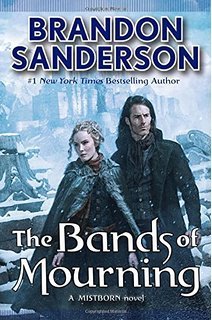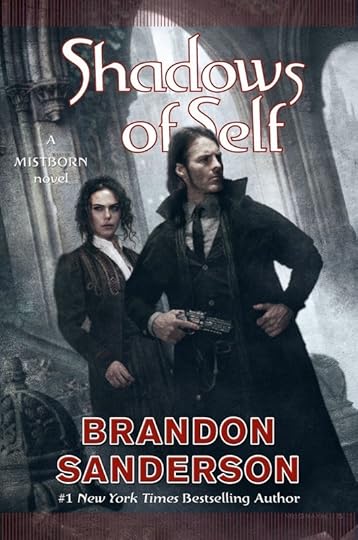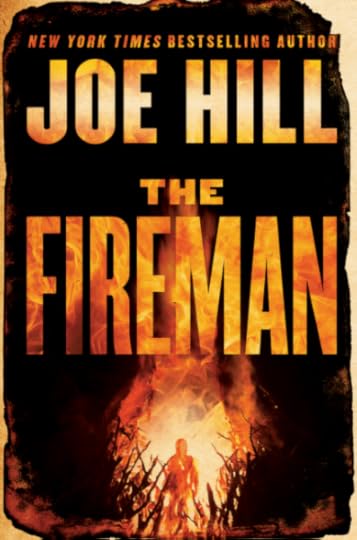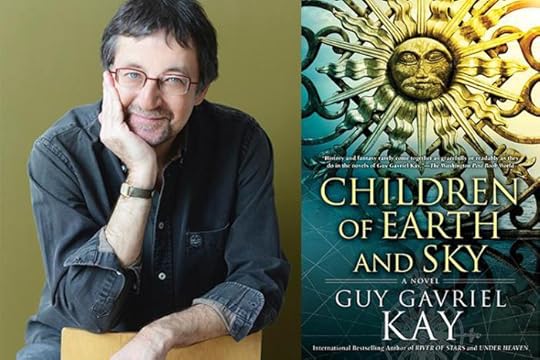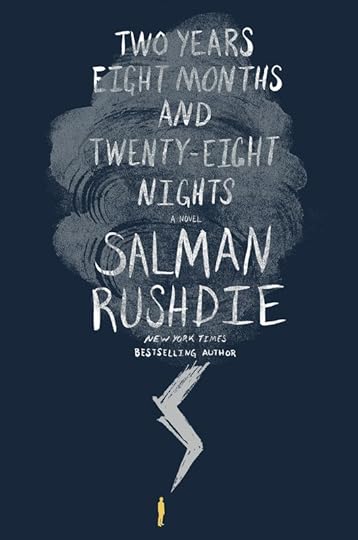Alex C. Telander's Blog, page 15
June 8, 2016
Book News: Time Travel Books, Reading Nooks, The Horrors of Christopher Pike and More!
Walmart to Library
How an abandoned Walmart became one of the best libraries you’ve ever seen.
Reading Nooks
Ten gorgeous reading nooks you just have to try out.
Can You Cheat at Reading?
The easy answer is yes, but you’ll be cheating against yourself and here’s how.
B-Teen at B&N
Barnes & Noble’s great teen fest idea that is now a real and awesome thing.


June 6, 2016
“The Collapse and Recovery of Europe, AD 476-1648” by Jack L. Schwartzwald (McFarland Books, 2015)
The complete collapse of the Roman Empire changed the western world forever. It was a tabula rasa of sorts, as the societies of the former Roman Empire had the opportunity to start anew and redefine the way their society existed. And this is essentially what happened for the next 1200 years through trial and error, with numerous new rulers, and many deaths along the way. The end result was the more stable nation state during the thriving Renaissance.
In The Collapse and Recovery of Europe, Jack L. Schwartzwald, author of The Ancient Near East, Greece and Rome, moves into the next arena of history, tackling this important period in history that was pivotal in creating and defining Europe as a union of individual and eventual nation states. You’ll notice there is no mention anywhere of the poorly and incorrectly named “dark ages,” implying that the beginning of these twelve centuries was a time of stagnation and a return to “primitive” times, when in reality important foundation blocks were being laid, paving the way for the rebirth of science, art and culture of the renaissance.
The book is divided into three parts and periods, the first covering the glorious time of Byzantium in “City of the World’s Desire,” encompassing a millennium of a minor empire that still considered itself continuing the glory that was Rome, when in reality it was a melting pot of various cultures, including Greeks, the growing Christian faith and flock, as well as Asiatic influences from the East. But as Byzantium was basking in the shadow of its paternal Rome, it too eventually succumbed to foreign invasion and overthrow.
In the second part, “City of God,” Schwartzwald covers the birth and explosion of the church and Catholic faith in Western Europe, as it sought to convert the people to God and create a heaven on Earth in the same thriving glory that was Rome, but as those high up in the faith — the popes and cardinals to name a few – fought for ideals they believed to be true to the faith, derision and schism grew, leading to fracturing and fighting and wars. The Middle Ages ended with the ultimate of struggles in the Hundred Years’ War.
The final part, “City of Man,” leads off with the end of the Hundred Years’ War and concludes with the Treaty of Westphalia in 1648. Here Schwartzwald focuses on the development and birth of the nation state which was deemed the final healthy successor to the idea that was Rome. As with the previous parts, the author focuses on the political and militaristic history of the period, but in a way that keeps the reader fully engrossed. Provided at the end of each section are “Societal Achievements,” highlighting the great strides that were made.
The Collapse and Recovery of Europe, as with Schwartzwald’s previous book, is a very approachable and readable volume, be the reader a student or merely someone interested in the period. Since the author is covering a vast amount of time, some 1200 years, he cannot be comprehensive with the history telling, but he is thorough with many sections covering the political and militaristic events and occasions in a succinct way that doesn’t bog the reader down with too many details; coupled with numerous pictures – many in color – it makes for a very pleasant reading experience. These sectional divisions also help to break up the overwhelming amount of history into digestible chunks so that the reader can read the book one section at a time, or engorge on a larger amount of history that is still well and clearly divided to make it more comprehensible. The result is an impressive history book covering a large amount of time that is made very accessible and readable for any fan or person interested in the period.
Originally written on June 1, 2015 ©Alex C. Telander.
First published in the San Francisco Book Review.
To purchase a copy of The Collapse and Recovery of Europe from Amazon, and help support BookBanter, click HERE.


June 3, 2016
“EI8HT Volume 1: Outcast” by Mike Johnson and Rafael Albuquerque (Dark Horse Books, 2015)
There’s a place where lost and abandoned things end up. Not just odd socks from your laundry and keys and other items you’ve misplaced, but bigger things too, even people. It’s known as the Meld. A place outside of time, an inhospitable dimension, where there are those in power subjugating and controlling those who are weaker, and most of reality has no clue this place exists.
Joshua is a chrononaut who has a job to do, which is to get to the Meld and assassinate a specific person. Using a time machine from the near future, he ends up in the Meld with damaged machinery and soon finds himself a captive. Before he knows it he finds himself face to face with the very person he needs to kill. There’s also the beautiful and unusual woman who he’s never seen before, but swears he was talking too just as he arrived in the Meld, as if he somehow knew her.
While the opening concept for Ei8ht seems interesting at first, the storyline quickly devolves into a predictable guns-firing slugging match between the goodies and the baddies that tends to bore the reader more than it does entertain.
Originally written on March 3, 2016 ©Alex C. Telander.
To purchase a copy of Ei8ht Volume 1: Outcast from Amazon, and help support BookBanter, click HERE.


June 2, 2016
“The Bands of Mourning” by Brandon Sanderson (Tor, 2016)
The adventures of twinborn Waxillium Ladrian continue in The Bands of Mourning, who possess both Feruchemical and Allomantic abilities. The second book in the “second trilogy” of the Mistborn novels focuses on the legend of the “bands of mourning,” mythical metalminds once owned by the Lord Ruler that have been lost to history and time that grant the wearer ability to control all the Allomantic powers that the Lord Ruler was able to possess.
A kandra researcher – a species of creature that can live millennia by absorbing the bones of dead things (be they animal or human) and take on the form of that being – has returned to Elendel from its travels insane having lost its Allomantic spike and has clearly been attacked. But it also possesses drawings that supposedly depict the Bands of Mourning as well as writings in an unknown language. Wax is hired along with his “gang” of unusual characters including his fiancee to travel to the distant city of New Seran to investigate what happened to the kandra and possibly discover any validity to the drawings and writings.
While the previous book, Shadows of Self, kept the story relatively short and simple, The Bands of Mourning reveals more of the complex world and history that readers have come to expect with Sanderson’s epic fantasy. Sanderson mixes addictive action scenes with fascinating history, along with healthy doses of humor and hijinks, for a very entertaining read.
Originally written on March 4, 2016 ©Alex C. Telander.
To purchase a copy of Bands of Mourning from Amazon, and help support BookBanter, click HERE.


May 31, 2016
“Shadows of Self” by Brandon Sanderson (Tor, 2015)
Brandon Sanderson really set the stage with his Mistborn trilogy that showed readers he truly knows how to spin a complex, detailed and fascinating yarn with some great magic and action. He’s also two books into his projected 10-book Stormlight Archive epic fantasy series. So readers wouldn’t expect Sanderson to return to his Mistborn world since he has lots of other stories to tell. But then again, if you know Sanderson at all, you’ll know he never likes saying goodbye to a world he created and is always willing to return to it, just not in the same time.
Enter Alloy of Law, his standalone novel from 2011, and the first of the new trilogy, Shadows of Self, coming October 6th. He’s back in the Mistborn world a couple centuries further along in the future. If the first trilogy was set in a medieval fantasy period, the new trilogy is late 19th century with a healthy dose of the wild west. Waxillium “Wax” Ladrian has spent his time in the Roughs rounding up outlaws and as a “twinborn” is using both his Allomantic and Feruchemical abilities: he can push and pull on metals, but can also become lighter and heavier at will.
Now he’s back in the metropolis of Elendel, Lord of House Ladrian, and can see the city is in turmoil as the nobility continues to become richer and fatter off the backs of the poor and downtrodden who are becoming angry and riotous. Then everything goes to hell when a strange intruder assassinates a number of important and purportedly corrupt nobility and it seems to be a creature from an earlier time. With the help of his close friend and sort of sidekick Wayne (think Badger from Firefly) who can create speed bubbles where he can speed up time, and Marasi who is working as researcher and investigator for the police department and is sister to Wax’s wife to be, she can also slow down time in her speed bubble; they need to find out who’s behind the assassinations before anyone else gets hurt.
Sanderson has clearly had too much fun updating his “fantasy world” with things like guns, electricity and motorcars and lots of other technology reflecting our late 19th century period that are seen as an abomination by many in this world while there are those who can also perform Allomantic and Feruchemical magic. Even though the book is shorter – under 400 pages – than the books of the first trilogy, and the story isn’t quite as complex, he balances this out with some great shootout action scenes that will keep you glued to the page.
And the really great news is that the second book in the trilogy, Bands of Mourning, is coming out January 2016, just a handful of months away!
Originally written on September 17, 2015 ©Alex C. Telander.
To purchase a copy of Shadows of Self from Amazon, and help support BookBanter, click HERE.


May 27, 2016
In a Few Words (2) . . . Blood is the Life

In the second installment of “In a Few Words,” we have the premiere tale in my first short story collection, Unquiet Slumbers for the Sleepers, that I self-published in 2011, “Blood is the Life.” It’s a short piece that has a lot going on. I’ve also included the notes about the story at the bottom. This is one of my earliest pieces of writing.
You can buy and download the book from Amazon in Kindle format or from Smashwords in any other format.
Blood is the Life
The boy had not eaten in days. His skin was pale, an indication of his sickness; his eyes were sunken into deep hollows, his cheekbones clearly visible beneath his stretched skin. His hair was thick and black, matted with clumps of dirt. His mouth was practically non-existent, just a thin line scythed into his face. He was just over five feet eight inches tall, though his frame was hunched over, due to his weakness. Each step he took resulted in a streak of white pain that coursed through his body like a bolt of lightning, as he dragged his frail form along. His mind no longer functioned properly, hallucinations appearing before him everywhere: one minute the street was congested with fat, sweaty people, noisy and uncouth; the next, it was entirely deserted, except for the rats that crawled along the gutters, searching for scraps of food.
Then the boy saw the Tall Man, dressed all in black, with a top hat, approaching him. The Man held a cane in hand, swinging by his side, its handle of shiny gold, which reflected the blanched light of the dim streetlights. He slowed down as he came closer to the boy. The boy looked up at the Man’s face and saw him staring right back at him. He was an old man, somewhere in his seventies; there were deep lines etched into his haggard face, but amongst all this tired and used flesh there was anger. The Man’s lips were drawn tight, dimpling his white cheeks in an evil way. The boy looked into the Man’s eyes and gasped at the viciousness within them. They were of no enchanting color, just a cold heartless black, absent of happiness, unable to conceive of compassion or love.
As the Man came closer, he began slowly lifting the cane above his head, his arm quivering because of his crippling arthritis. The air was icy-cool, steam permeating between the Man’s lips as he prepared himself for the beating. Now the boy became scared . . . he hadn’t done anything wrong.
“I d-did nothing w-wrong . . . it wasn’t m-me,” the boy cried, shivering with fright and cold; he wore only rags.
“You know it was all your fault, you retched troll!” the Man answered in a low, quiet-but clear voice that pierced the goose-pimpled skin of the boy like hot needles.
The boy began crying, tears streaming down his face, creating canals through the dirt on his cheeks; they never reached his dry mouth, but froze onto his cold flesh. The Man stopped just three feet from the boy. The cane was now high above his head. The boy watched as the Man moved his arm in the first strike.
Just as the cane was about to crunch onto the boy’s head and split his skull open, he screamed.
The apparition disappeared.
The boy looked up . . . the Man was gone. It had all been a hallucination.
The boy continued towing his body along the street. Then he heard the smash of a bottle in the alley to the left of him. He turned and hauled himself into the alleyway. There was an unidentifiable lump on the floor. It grunted at the boy kicked it; it was a useless bum. The boy looked up the alley to the right of him, it was a dead-end; to the left him, from where he’d come, it was silent, gloomy and devoid of life. The boy looked down at the dirty thing. His small hands reached out: one seized the man’s dirty greasy hair, getting a tight grip on the chunks of grime; with his other hand he seized the drunkard’s shoulder, clinging, like an eagle’s sharp talons, digging into the flesh. He pulled the shoulder and head in opposite directions, exposing the supple white throat.
The man began grunting and groaning, wondering what was happening. The boy bent down towards the hobo’s throat; he opened his mouth, brandishing two long sharp pearly-white fangs. The teeth sunk smoothly into the soft pliable flesh; blood dribbled from the two incisions. The boy began sucking noisily, his craving for blood increasing by the second, his sickness being cured, his hunger satiated, his strength regained.
Warm began returning to his body.
When the boy had finished, he let the body slip to the floor, dead; he stood tall and strong, replenished. A trail of blood dripped from the corner of his mouth, and a long lascivious tongue slithered out and licked it up before it could drip to the floor.
Notes on “Blood is the Life”
This is one of the earliest pieces I’ve written, way back in 1995 I think. I knew it was going to be a short piece, but I was looking to pack it and fill it with as much sensory detail as possible to convey a lot in a short piece of writing. I was very happy with how it turned out and continue to enjoy it as one of my earliest pieces of writing.


May 25, 2016
“The Fireman” by Joe Hill (William Morrow, 2016)
After delighting growing fans with a classic ghost story in Heart-Shaped Box and a tale of terrifying horror in NOS4A2, in his latest tome weighing in at 768 pages, Joe Hill presents his world on the edge of apocalypse. No one really knows how or where it started, but wildfires are tearing through the country and they’re being caused by people. Now, when I say people, I literally mean people are bursting into flame and starting these fires.
Doctors call it Draco Incendia Trychophyton, but everyone else refers to it as Dragonscale. It’s a highly contagious spore and you know you’ve got it when you find these lustrous black and gold bands on your body. It’s unknown what happens in between getting the ‘scale and spontaneously combusting, but there are a lot of people burning up and society is starting to fall apart. There are roving gangs looking to put an end to anyone with the Dragonscale to prevent it spreading further, meanwhile the government says its working on a cure, but really has no idea what it’s doing. Things escalate and continue to get worse and worse.
Our story focuses on Harper Grayson, a talented and compassionate nurse who cares greatly for others and is working her butt off with the current crisis. Her husband, Jacob, barely sees her and doesn’t really get why she’s trying to save all these people with Dragonscale. When Harper contracts the spore, he goes off the deep end mentally and it turns into a very different relationship. Harper doesn’t needs convincing and tries to get the heck out of dodge, but Jacob has other plans. Harper makes it out of the house with the maniac formerly known as her husband is after her. That’s when the tall drink of water with a British accent known as The Fireman comes to save the day.
Harper joins a commune where they have apparently mastered the power of Dragonscale. By joining together and singing, they are able to control the incendiary ferocity of the disease and keep themselves alive and well. But in any group fighting to survive, tensions are strained and stress is at an all time high, as things turn into a kind of Lord of the Flies situation. But there is a rumor that has become legend of an island off the coast of Maine where they are taking in people with Dragonscale, where they can live a nice, normal life without prejudice or persecution.
The Fireman is a wonderfully original tale that takes a few elements like plague and fire and churns them into a compelling story. As with all stories of an apocalyptic nature, it is ultimately about the choices and decisions the people make to survive. Hill’s characters are varied and interesting and definitely give the novel a realistic feel. The middle of the book lags a little, and overall could’ve had some pages editorially excised, as the downturn of the commune gets pretty predicable and uninspiring. But the last third of the book is nonstop action, and even though Joe Hill seems to suffer from his dad’s problem of executing a good ending for the book, The Fireman is a fun escape from you mundane life into a world of fire and fighting and people who give a damn.
Originally written on May 13, 2016 ©Alex C. Telander.
To purchase a copy of The Fireman from Amazon, and help support BookBanter, click HERE.


May 24, 2016
Book News: Queer Sci-Fi, Road Trip Reads, 100 Tales of The Old West & More
Dark Tower News
Recently some photos leaked of Idris Elba in his getup as Roland of Gilead; warning it will give you shivers.
Queer Comics for Sci-Fi Fans
Just to show that comics are pushing the envelope in every way, here are five queer comics for scifi fans.
Mental Reads
Five recommended science fiction and fantasy books that tackle the prickly subject of mental illness well.


May 21, 2016
Guy Gavriel Kay @ Copperfield’s Petaluma This Sunday 2PM
Bestselling author Guy Gavriel Kay is coming to Copperfield’s Petaluma this very Sunday, May 22nd at 2PM. In addition to being a great, lyrical writer, he’s also a really nice guy.
Here’s my review for his latest book, Children of Earth and Sky.
And here’s my interview I got to do with Guy a number of years ago.
And here are details on this free event.
See you there!


May 20, 2016
“Two Years Eight Months and Twenty-Eight Nights” by Salman Rushdie (Random House, 2015)
Salman Rushdie has a way of taking something entertaining and wonderful and bringing it to a whole new level of brilliance. The title – Two Years Eight Months and Twenty-Eight Nights – may be better known by another, alternate one: One Thousand and One Nights. Right there you get where Rushdie is coming from with this book, which he lets on at the beginning of the book, starting long ago in the time of someone named Scheherazade and the world of the jinn. There is our world and there is also another, the world of the jinn. Sometimes the jinn come over into our world and do the things that jinn do.
But then long ago, one jinn in particular, a princess of the jinn by the name of Dunia, coupled with a human male and gave birth to a brood of offspring, half-jinn half humans, that have bred down the generations leading to some of the main characters in the story. We jump to a time in the not too distant future where a storm strikes New York City and begins the time known as the strangenesses. Very strange things begin happening to people in everyday life. Such as those who can no longer touch the ground but are hovering a few inches above it and as time passes, hover ever higher. Or the graphic novelist who must face one of his creations come to life. Or the arrival of a strange baby who can identity those who are corrupt and liars and becomes an important implement of the mayor’s. It appears a war is raging and waging between the jinn in our world and mere humans are in many ways the victims. But the descendants of Dunia have some ways and abilities to fight back.
Rushdie has taken the premise of an already amazing story, modernized it and brought it into a new and higher realm that serves to blow the reader’s mind in some ways with its scope and detail. Just as One Thousand and One Nights has been addictive reading for many through time, so Two Years Eight Months and Twenty-Eight Nights is a rollicking tale fit to be read and enjoyed by many from now until the distant future.
Originally written on October 31, 2015 ©Alex C. Telander.
To purchase a copy of Two Years Eight Months and Twenty-Eight Nights from Amazon, and help support BookBanter, click HERE.







